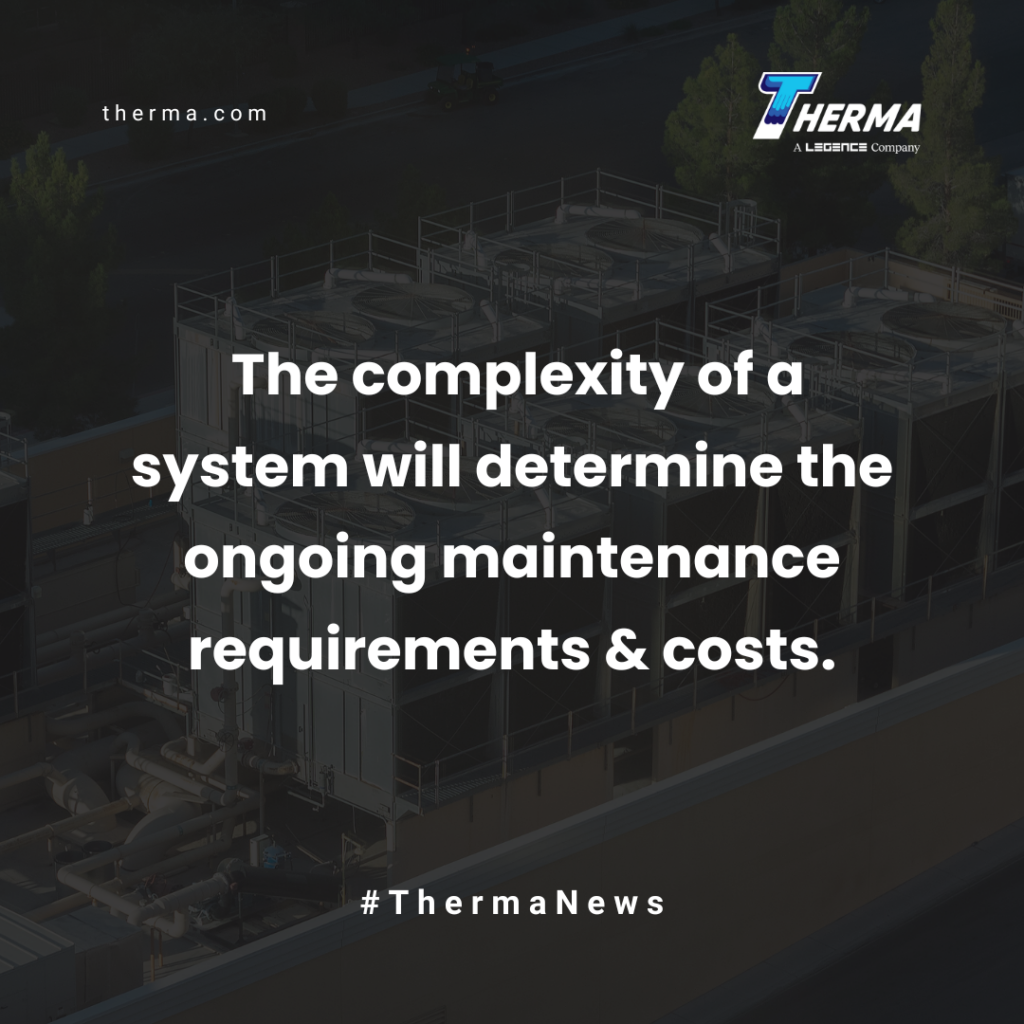by Ali Kriscenski
HVAC systems play an important role in building efficiency and comfort. Finding the right type of commercial HVAC system for your facility depends on many factors including location, age, size, and program. This article will take a look at the different options and how they can benefit your operational goals.
Types of Commercial HVAC Systems
There are different types of HVAC systems to meet every building or facility’s requirements. The systems vary in fuel source, configuration, costs, and efficiency. Understanding the wide range of systems available will help you determine which option will best suit your facility or building.
Single-Split Systems
Single-split systems have an outdoor unit that houses a condenser and compressor connected to an indoor unit consisting of an evaporator and fan unit. The units are connected through lines that circulate refrigerant to exchange thermal energy between the exterior and conditioned spaces. Single-split systems work well in smaller commercial buildings where there is dedicated indoor and outdoor space for mechanical equipment. They are cost-effective and easily installed with manageable maintenance.
Multi-Split Systems
Multi-split systems operate similarly to single-split except they connect an outdoor unit to multiple indoor evaporator and fan units. This variation allows more zoned HVAC conditions where each indoor unit allows temperature control. These systems are well suited to larger commercial buildings, such as office complexes or hotels, where temperature settings can be customized to various spaces. Multi-split systems can carry higher installation and equipment costs as well as more complex maintenance protocols.
Variable Refrigerant Flow (VRF) Systems
Like multi-split systems, VRF systems depend on one outdoor unit housing a condenser and compressor connected to multiple indoor evaporator and fan units. These systems have advanced controls to moderate the flow of refrigerant to meet the heating and cooling demands of various zones within a building. VRF systems are a good choice for larger commercial facilities. They are highly energy efficient and can facilitate heating and cooling variations with flexible design. VRF systems rely on more sophisticated controls, increasing installation and maintenance costs.
 Variable Air Volume (VAV) Systems
Variable Air Volume (VAV) Systems
VAV systems use controlled point distribution devices to vary the temperature and airflow in conditioned spaces. This type of system allows building managers to control larger HVAC systems in a way that provides more reactive thermal comfort settings. VAV systems incorporate dampers at each space or zone that require individual heating or cooling conditions. For example, facilities that house large conference rooms as well as smaller spaces can have varied HVAC requirements. VAV systems provide the flexibility to meet varied demands. While these systems provide increased thermal comfort, they are more complex to install and maintain.
Air Source Heat Pump Systems
Air source heat pumps exchange thermal energy between outside and conditioned spaces with a series of coils and a compressor. These systems transfer thermal energy between an indoor coil and an outdoor coil through a refrigerant. Air source heat pumps are efficient systems for heating and cooling in moderate climates. They are cost-effective, easily installed, and suitable for applications with limited exterior and interior mechanical space. In regions with extreme weather conditions, a backup heating system may be required to ensure building and occupant comfort and safety.
Geothermal Systems
Geothermal HVAC systems utilize thermal energy within the earth to heat and cool buildings. These systems exchange heat through a fluid medium (water or refrigerant) in piping that circulates between a building and a submerged heat source or heat sink. The ground source can be vertically accessed through wells or horizontally configured within a body of water, such as a lake. An electric-powered heat pump exchanges the thermal energy facilitating heating or cooling. Geothermal systems are very energy-efficient, quiet, and have a low environmental impact. They can incur significant upfront costs, however are widely eligible for energy efficiency incentives, such as rebates or tax credits.
Considerations for HVAC Upgrades
When you are assessing your heating and cooling requirements, there are several important factors to consider before selecting a type of commercial HVAC system. The best system needs to be suitable for your building or facility size, layout, location, and energy demands. Consider accessibility to energy sources such as solar or geothermal. Additionally, an overview of current and future energy efficiency goals and strategies will help inform your selection, such as decarbonization targets or operational energy cost savings.
It’s also important to consider the operating and maintenance costs of various HVAC systems. Initial costs such as equipment, devices, and installation are part of the investment. The complexity of a system will determine the ongoing maintenance requirements and costs. Working with a knowledgeable HVAC team from the start can help you navigate the selection process, provide continuity for correct design and installation, and also create an ongoing partnership to execute regular and preventive maintenance. Contact the professionals at Therma for expert advice.
AUTHOR BIO
Ali Kriscenski was trained in high-performance building design at Boston Architectural College. She has worked with leading architecture and construction firms in NYC and New England and served on the executive team at the Forest Stewardship Council International. She was the managing editor at Inhabitat and has worked pro bono for the Green Building Institute, ISEAL Alliance, and Habitat for Humanity.
Sources
US DOE – Save Energy in Commercial Buildings
Forbes – Five Biggest New Energy Trends







